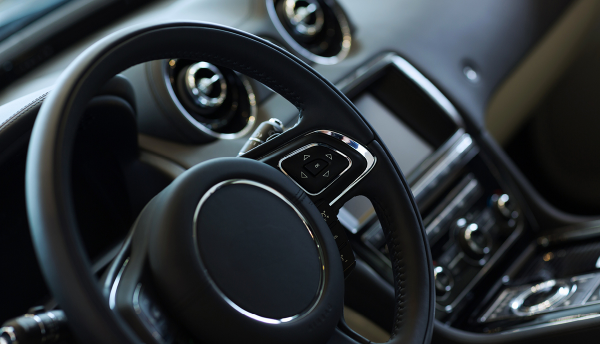
Google is set to begin on-road testing this summer of its prototype self-driving car. Google has built 25 vehicles that it will take to the streets around its offices in California, United States. The company’s latest iteration of its prototype vehicle uses the same software as its test fleet of Lexus RX 450h vehicles, though with more sensors. The new autonomous prototype the company is set to use has been custom built with incorporated sensors, whereas previously its sensors were added onto a standard Lexus. The Google prototype is limited to 25mph and Google drivers will have a detachable steering wheel, accelerator pedal and brake pedal to take over control as necessary.
Google also said that the prototype cars have sensors which eliminate blind spots next to the vehicle and 200 metres in all directions. The prototypes include protocols for defensive driving (eg, staying out of the blind spot of other vehicles and pausing before proceeding after a red light turns green). Passenger and pedestrian protection technology includes foam front-end and flexible windscreen.
Google maintains that this is a research project and not development of a specific production vehicle. It seems clear that the autonomous question is if, not when; results of this and other projects advancing the technology rapidly, though true consumer demand is less certain. However, though Google is in the driving seat in terms of development, they are unlikely to be producing the necessary physical parts for any autonomous driving system. Instead their opportunity is likely to come in licensing software they develop, for which they need to be first to market, hence an aggressive 2017 target. Google is less interested in being a vehicle manufacturer than it is preparing the landscape for change and then enabling it by taking care of the tougher part of the development, or the software.
Most automakers at this stage have their own autonomous vehicle projects, but are quietly working on the other aspects that build towards it, such as active safety as well. The last few months have seen a number of automakers announce progress on autonomous vehicles projects, including Audi, Mercedes-Benz and Hyundai.
For Google though, the retrofitting of vehicles is no longer sufficient and they have now reached the point where they need to prove this out with purpose-built hardware. Interestingly, it seems that Google is now working closely with automotive suppliers, not OEMs, on creating vehicles.
In January, Google confirmed that it had been working with suppliers to speed its push to bring self-driving cars to market. Google named Bosch (power electronics and long-range radar); ZF Lenksysteme (now Robert Bosch Automotive Steering; steering gear); LG Electronics (batteries); Continental (automotive electronics and tires) and Roush as its partners, confirming earlier reports that Roush had built the two-seater that Google says it will begin testing this year. Google’s Chris Umson, director of the self-driving cars programme, confirmed that Google will look to a large automaker for production when it commercialises the technology.
The shift of R&D responsibilities onto suppliers – once seen as a strategy by OEMs to transfer a costly element of auto production – has proved beneficial as tier ones find themselves market leaders in a number of key technologies. OEMs are only just starting to play catch-up, while the major suppliers are now ploughing as much as 5% of revenue back into R&D. Google has the opportunity to take advantage of this swing by doing the development for a self-driving vehicle. However for the project to really work, it needs to be first to market.
Looking to have automakers build the Google self-driving car is consistent with Google’s current status as a software and data company. If Google encourages the automaker to step in for production and provides the software and ability to integrate software, hardware and firmware systems, it has potential to free Google up from having to resolve industry issues that automakers can address much more quickly and efficiency – for example, safety system regulations, lighting standards and other functional vehicle issues.
However, Google stopped short of saying it was looking to license its self-driving technology. Google’s car is still in the research phase. If a traditional automaker can develop the systems necessary to commercialise a self-driving car ahead of or on a similar timeframe as Google, they may be less likely to fabricate a vehicle for the technology giant. However, there are automakers with fewer resources; for one of them, assembling for Google could get them into a sector they might not otherwise be able to get a foothold in.
Although Google’s limited test on public roads by 2017 is feasible, IHS Automotive forecasts the first Self Driving Cars (SDCs) will be on the road around 2025, which would be Level 4 (meaning fully autonomous, but also able to be controlled by a human driver). Level 5 SDC-only (no human controls) cars are forecast to appear about 2030. We forecast the first SDC cars will have global sales from 230,000 in 2020 to 11.8 million in 2035 (Level 4 and Level 5).








